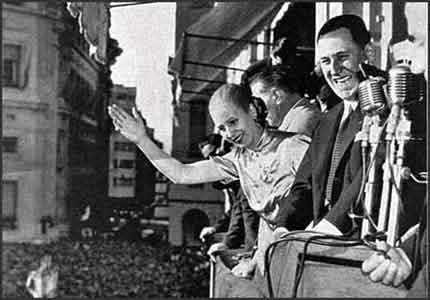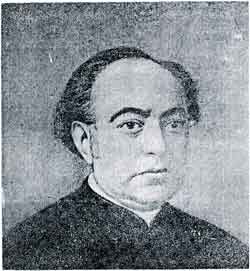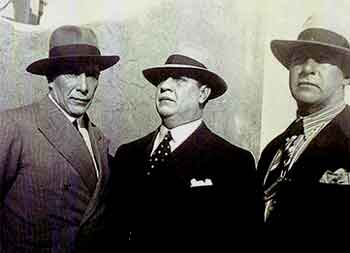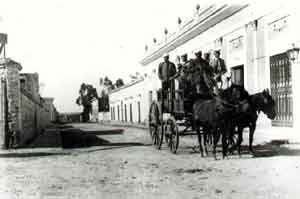
|
Politically Incorrect
By Carolina Barry
[1]
|
|||||||
|
|||
|
|
|
The "Admiral Brown Club" of 1879 was the first political initiative of the Irish in the country, together with other members of the local English-speaking community. Their aim was to organise the aspirations of the Irish Argentines towards the election of candidates to national, provincial and municipal posts. The Club was chaired by Eduardo Casey (1847-1906), with Fr. Patrick Joseph Dillon (1842-1889) acting as its first secretary. In 1880 Dillon was elected MP to the provincial parliament of Buenos Aires with the Club's support. Some years later the Admiral Brown Club was restructured so as to accept members from any ethnic origin. Fr. Dillon was elected MP to the national parliament for Buenos Aires, where he was appointed to chair the Constitutional Affairs committee. The Southern Cross, an Irish paper founded by Fr. Dillon in 1875, became a public gallery and supported among other things the separation of Buenos Aires city from the province.
From the beginning, the Southern Cross stated its political principles, “the tone of the paper will be liberal (like the Freeman of Dublin). The paper will not adhere to any particular party in this country”. [2] However, the Irish community adhered to a greater array of ideologies than the liberal one. As Sabato and Korol described in their book, they gradually integrated into the broader society and joined its new organisations (Sabato and Korol 1981: 151). For instance, Juan Dillon (1819-1887) - not directly related to Fr. P.J. Dillon - was elected senator to the Buenos Aires parliament for the Autonomist Party during three uninterrupted periods. In 1874, during the presidency of Nicolás Avellaneda, Juan Dillon was appointed member of the National Constitution amendment committee.
There were members of Irish families in the 1890 and 1893 revolutions. Juan A. O'Farrell (1866-1942) was MP for the Radical Civic Union party (UCR) and during several years he chaired the party's provincial committee for Buenos Aires. Eduardo Tormey (1848-1912) was MP for National Civic Union and major of Capilla del Señor. Miguel Zacarías O'Farrell (1868-1947) was elected senator and municipal commissioner in Suipacha with governor José Luis Cantilo. Guillermo Sullivan (1888-1927), MP for UCR, led together with his brother Santiago the rebels of northern part of Buenos Aires province during the revolution of January 1905. Among the members of the anti-personalist group,[3] Guillermo O'Reilly (d. 1966), MP for the Federal Capital in 1920-1924, supported the divorce law and for this reason fell from President Hipólito Yrigoyen's favour (Iushistoria USAL, 1 November 2004).
|
|
Other Irish Argentines who played a significant political role were the brothers Kennedy. In January 1932, Roberto (1884-1960), Mario (b. 1888) and Eduardo Kennedy (b. 1880) led a popular uprising in La Paz, Entre Ríos province, which served as a model to the upcoming mass movement led by Juan Domingo Perón (1895-1974), a movement generally known as Peronism. [4] The three brothers Kennedy failed in their attempt against the dictator José Felix Uriburu but were later pardoned. Estanciero and MP Francisco Morrogh Bernard of the Patriotic League in Entre Ríos developed important tasks in the conservative group.
In the nationalist caucus, Santiago G. O'Farrell (1861-1926) was one of the founding members of the Argentine Patriotic League. [5] In 1904 O'Farrell was elected MP and would be re-elected for two more terms, but failed as presidential candidate. Tomás J. Barry was a member of the executive committee in the Nationalist Party which, according to the author Zuleta Alvarez was in fact a conservative organisation (Zuleta Alvarez 1975: 195). Many nationalist newspapers included Irish Argentines in their staff. In 1918-1920 Guillermo Sullivan contributed to Revista Nacional, a paper edited by Mario Jurado and Julio Irazusta, members of the avant-garde of nationalism. In 1920-1921 Beltrán Morrogh Bernard edited Signo, a Catholic-nationalist publication. In 1928-1930 the zoologist Emiliano MacDonagh (1896-1961) contributed to the Catholic nationalist papers Criterio and Número.
The different responsibilities held by Irish Argentines in the Radical party, as well as in nationalist and conservative political organisations have been identified by other authors. However, the participation of Irish Argentines in the early Peronist period (1945-1955) has been frequently neglected. In this period, characterised by important changes in the Argentine history, men and women with Irish ancestry were not only simple supporters but also key leaders of the Peronist power structures.
|
|
It is difficult to understand the extent by which the Irish Argentines adhered or not to Peronism. There were multiple reasons for the Irish Argentines to support the movement, and each person had their own purposes. However, there are two factors that may be significant for this support. First, the early alliance between the Grupo de Oficiales Unidos (GOU) – a secret organisation of military officers and others with nationalist and pro-Axis sympathies – and the Catholic hierarchy. Second, the overt backing obtained by Perón from the Catholic bishops in 1946 during the electoral campaign. Therefore, the Catholic church stated its position against the electoral alliance among the Radicals, Communists and Socialists. Moreover, before the elections the bishops issued a statement warning "Catholics not to vote for any candidate who supports the separation of church and state, the suppression of legal warrants to religions and, especially, of the religious oath of office, school laicism, and legal divorce" (Llorente 1980: 291). According to Llorente, many parish priests in the provinces proclaimed from the pulpit their open support of the Peronist alliance. Perón wished to obtain the Catholic support, and he promised to preserve religious teaching in schools. This was already ruled out by the government of June Revolution, [6] and as under-secretary of labour and social welfare, Perón claimed that his administration was modelled by the Catholic social teaching. Indeed, major newspapers published an advertisement signed by the Christian Popular Union (one of the organisations standing for Perón) recruiting new members "to defeat the spirit of totalitarianism, and to rise the Cross of Christ's over the people" (La Epoca, 22 January 1946).
Another factor was the support of some Radical groups to the Peronist campaign. They shaped an electoral coalition with the Labour and Independent parties, which succeeded in raising Juan D. Perón to the top post. It is likely that among those Radicals there were some Irish Argentines. It is remarkable that a 1946 editorial of the Southern Cross paper referred to Col. Perón's rally as a successful campaign. The editor John Gaynor observed that Perón's supporters have obtained a major victory that was unusual in the country's political history. However, he exposed some concern regarding the experience of the Labour union leaders, who had "no experience in the practical job of public administration" (the Southern Cross, 29 March 1946). The same claim was exposed by Gaynor for the Radical supporters of Perón in the Junta Renovadora, which was the cause of the first significant break in the Peronist coalition (Mackinnon 2002: 39).
A popular movement with revolutionary social aspirations – as was the one led by Juan Perón – was not compatible with a community traditionally linked to landowners' interests. Several of the Irish Argentines were members of the landed elite, whose principles and values were better represented by Radicalism. Furthermore, in 1946 elections the Argentine Rural Society (including several Irish Argentine among its members) supported the Democratic Union, i.e., the coalition opposing Perón. However, conscious or not of the politically incorrectness of their choice, Irish Argentine men and women joined the ranks of the Peronist movement on account of the strong initial backing of the Catholic church, the break in the Radical party, the support obtained from Nationalist and Conservative groups, and their individual interests. [7] To illustrate the relation of these persons with the movement I will describe the roles and positions held by some Irish Argentines in the early Peronist period.
Irish Descamisados and Compañeros [8]
Among Latin Americans of Irish ancestry, Edelmiro Julián Farrell (1887-1980) reached the highest political responsibility in one of the region's countries after the independence period. Tenth son of Juan Farrell (b. 1846) and Catalina Plaul (1852-1917), and grandson of Matthew Farrell (d 1860) of Barracas al Sur (a popular neighbourhood of Buenos Aires), Edelmiro Farrell was an active member of the Grupo de Oficiales Unidos (GOU). On 4 June 1943 a military coup led by general Pablo Ramírez appointed Farrell as minister of war, and later as vice-president. In February 1944, Ramírez was deposed by the pro-German GOU after announcing that Argentina would comply with US requirements against the Central Powers. On 12 March 1944 the vice-president and minister of war Edelmiro Farrell took over as president and stayed on power until 1946.
[1] Carolina Barry graduated in Political Science (University of Buenos Aires), and is a PhD candidate at Universidad Católica Argentina. Her major research interests include women's roles during the early Peronist period in Argentina (cbarry@fibertel.com.ar).
[2] Circular issued by Patrick J. Dillon in November 1874 to announce the launching of the Southern Cross.
[3] Within the Radical party, the "anti-personalist" group opposed to Hipólito Yrigoyen's practise of giving the party a personal character.
[4] Also known as Justicialism.
[5] The Argentine Patriotic League stressed the transcendental values of Argentine nationality.
[6] On 4 June 1943 a military uprising led by GOU officers – among them, Juan Domingo Perón – interrupted the period of conservative amendments initiated in 1930, and started significant and lasting reforms with profound effects in the Argentine society.
[7] At this time, there were significant social discontinuities within the Irish Argentine community. Some of the Irish families managed to acquire land and joined the local elite of estancieros, and a few among them reached privileged positions. However, several settlers were salaried and would be living in dependent conditions, several of them employed by the wealthier group of Irish landowners. This gap would be best identified chronologically, since the most successful immigrants generally arrived in Argentina before the 1860s, so they could take advantage of active migration networks and of the wool economic cycle in order to purchase their holdings. Generally speaking, those who arrived later, especially after the 1870s, and their children would never advance from the employee status and were better inclined to support Peronism than their employers.
[8] Descamisados (shirtless) was used by J.D. Perón referring to his supporters, especially those belonging to the labouring class. Compañero (comrade) was the general identification of any supporter of the Peronist party.
Online
published:
1 November 2005
Edited:
07 May 2009
Citation:
Barry, Carolina, 'Politically Incorrect: Irish
Argentines in the Early Peronist Period' in
Irish Migration Studies in Latin America, 2005 [www.irlandeses.org], accessed.
| The Society for Irish Latin American Studies, 2005 |
Copyright Information |
 |



